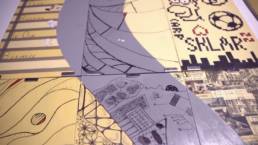Every March, a new edition of the Global Recycling Day is celebrated. We review how you can take advantage of this necessary practice to give life to your spaces.
More than a choice, a necessity
There is a key to understanding life on the planet today. The resources we have are scarce, so it is the job of the whole society to have responsible general habits and responsible consumption.
From specific problems such as the accumulation of waste in cities to the complete destruction of habitats in different parts of the world, the negative effects of not practicing recycling are multiple, so its practice was included in the UN’s Sustainable Development Goals of 2030.
It is also important to understand that recycling comes from the so-called Rule of 3 Rs promoted by Greenpeace to provide a new perspective on consumption; this includes:
Reduce
This reminds us that we shouldn’t produce so much waste. We need to reduce or minimize garbage generation either at home, work, or the place of study.
Reuse
This applies to some things that we consider useless. The goal is to extend the life cycle of many products that generate waste.
Recycle
This means reusing some of the waste generated as raw materials in industrial processes to convert them into new quality products for the consumer. It is a process that, above all, requires individuals and communities to attempt to meet these standards.
Why is it worth recycling?
Here are some of the specific reasons you should practice recycling.
You decrease the use of raw materials
In addition, by reusing objects, you prevent some industries that significantly negatively impact the environment from manufacturing new products.
You save energy and water
These are two fundamental elements in any industrial production process and on which life on the planet depends to a large extent.
You can support the creation of responsible consumption networks
They are networks that promote sustainable practices that respect the environment and social development.
You reduce greenhouse gas emissions. They are inevitably a consequence of the manufacture of products and materials and their transfer from factories to points of sale and their place of final use.
Some ideas for decoration that favor recycling
Use of materials with a long life
When you choose, for example, natural stones or quality tiles, you know that you have a material that, for its simple maintenance and durability, will not need replacement either in the short or medium term. Hence, you avoid the indiscriminate use of raw materials.
Use of surplus material
For example, mosaics with the remains of the installation of porcelain are a traditional way to use this surplus material, and you only need your imagination.
Intelligent faucet systems
They can control that you use only the water necessary each time and detect any leaks or system failures that imply a waste of this vital resource.
Intelligent electrical systems
Not only in the lighting but in the plugs to have inputs that allow access to energy in an optimized way and reduce the use of products such as disposable batteries.
Curated by Prosein
One of our most recent initiatives linking art and recycling was “Curated by Prosein”, an art exhibition we held at our tile store in Doral, in which designers and friends created artistic uses our leftover tiles as a canvas. The result: unique and stylish pieces of art.




